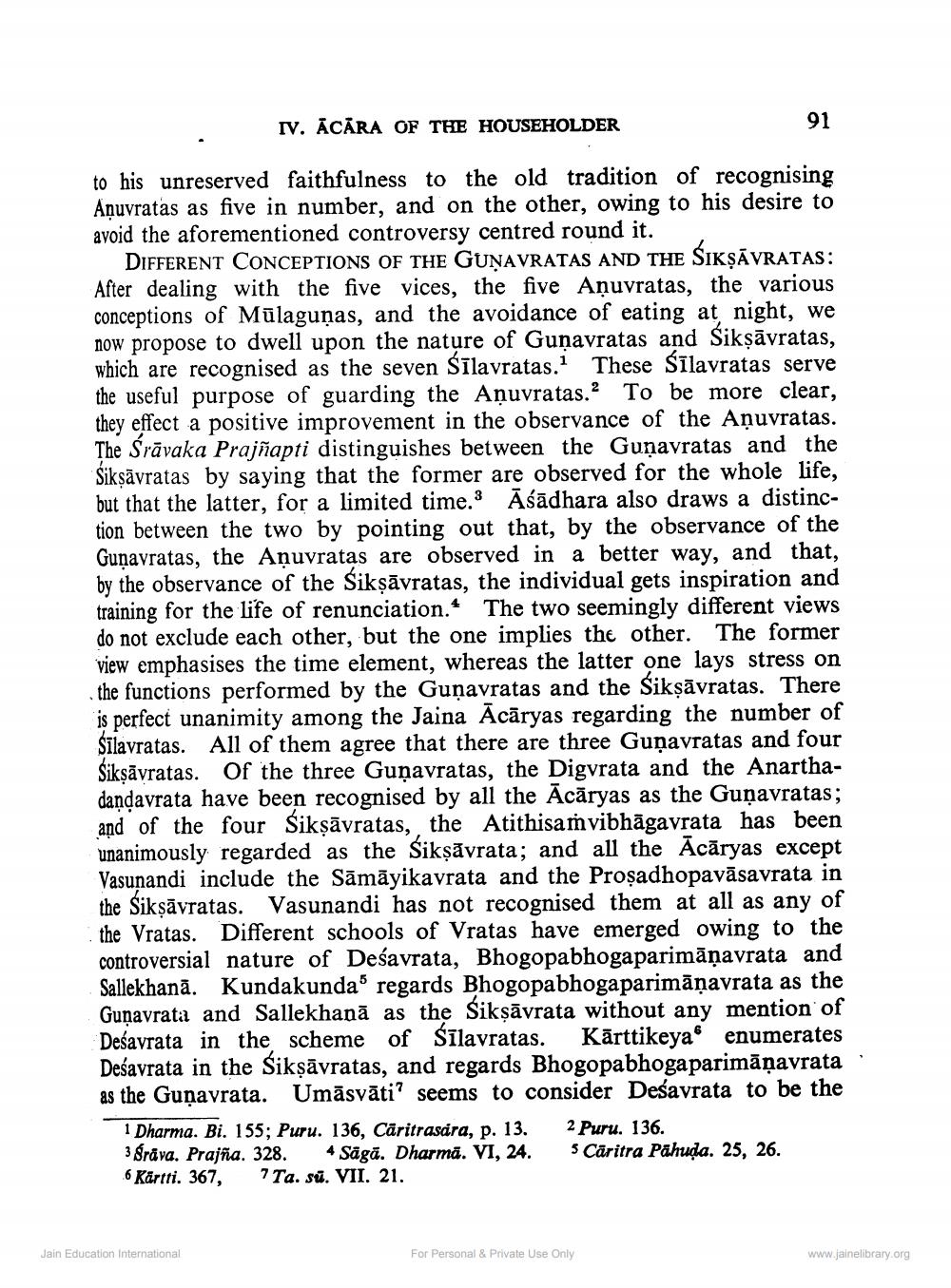________________
Iv. ĀCĀRA OF THE HOUSEHOLDER
91
to his unreserved faithfulness to the old tradition of recognising Anuvratas as five in number, and on the other, owing to his desire to avoid the aforementioned controversy centred round it.
DIFFERENT CONCEPTIONS OF THE GUŅAVRATAS AND THE ŞĀVRATAS: After dealing with the five vices, the five Anuvratas, the various conceptions of Mūlaguņas, and the avoidance of eating at night, we now propose to dwell upon the nature of Guņavratas and Sikşāvratas, which are recognised as the seven Šīlavratas.1 These Sīlavratas serve the useful purpose of guarding the Aņuvratas. To be more clear, they effect a positive improvement in the observance of the Aņuvratas. The Srāvaka Prajñapti distinguishes between the Gunavratas and the Sikşāvratas by saying that the former are observed for the whole life, but that the latter, for a limited time. Āśādhara also draws a distinction between the two by pointing out that, by the observance of the Guņavratas, the Anuvratas are observed in a better way, and that, by the observance of the Siksāvratas, the individual gets inspiration and training for the life of renunciation. The two seemingly different views do not exclude each other, but the one implies the other. The former view emphasises the time element, whereas the latter one lays stress on the functions performed by the Guņavratas and the Sikṣāvratas. There is perfect unanimity among the Jaina Ācāryas regarding the number of Sīlavratas. All of them agree that there are three Guņavratas and four Sikşāvratas. Of the three Guņavratas, the Digvrata and the Anarthadandavrata have been recognised by all the Ācāryas as the Guņavratas; and of the four Sikşāvratas, the Atithisam vibhāgavrata has been unanimously regarded as the Sikşāvrata; and all the Acāryas except Vasunandi include the Sāmāyikavrata and the Proşadhopavāsavrata in the Sikşāvratas. Vasunandi has not recognised them at all as any of the Vratas. Different schools of Vratas have emerged owing to the controversial nature of Deśavrata, Bhogopabhogaparimāņavrata and Sallekhanā. Kundakunda regards Bhogopabhogaparimānavrata as the Guņavrata and Sallekhanā as the Sikşāvrata without any mention of Deśavrata in the scheme of śīlavratas. Kārttikeya enumerates Deśavrata in the Sikşāvratas, and regards Bhogopabhogaparimāņavrata as the Gunavrata. Umāsvāti? seems to consider Deśavrata to be the
1 Dharma. Bi. 155; Puru. 136, Căritrasdra, p. 13. 2 Puru. 136. 3 Srava. Prajña. 328. 4 Sägā. Dharmā. VI, 24. SCáritra Pāhuda. 25, 26. 6 Kartti. 367, 7 Ta. sü. VII. 21.
Jain Education International
For Personal & Private Use Only
www.jainelibrary.org




